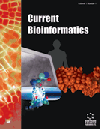
Full text loading...

Biomolecule sensing for recognition is exhibited as the fundamental upstream step concerning target identification during the metabolism of individual life. Nevertheless, it is always a complicated work that leverages both in vitro and in vivo experiments to discriminate the corresponding interaction, affinity, structure, activity, and toxicity concerning target biomolecules. Simultaneously, biological investigation with intelligent computing has extended to bio-sequence analysis and biomedical image processing, especially biomolecule identification in multi-view and multi-modal. This review presents a panorama of contemporary development among biomolecular omics and computing biological sensing, machine learning scenarios, and heterogeneous information with multi-view, multi-modal, structured, and unstructured text and biomedical images. After being given the background, the concept and database of biomolecule interaction, affinity, and structure are introduced. Then, the machine learning paradigms in bioinformatics and biomedical engineering are demonstrated according to epigenetics-centered or pharmacogenomics. Next, the multi-view or multi-modal learning algorithms and optimization strategies with structured and unstructured data formats, including texts and biomedical images are listed in detail. By comparing and analyzing the state-of-the-art works, this study has summarized the advantages of existing methods in target biomolecule identification and the challenges. Finally, future developments are prospected, including the trend of research in robustness, data augmentation, generalized model delineated, and acceleration.

Article metrics loading...

Full text loading...
References


Data & Media loading...